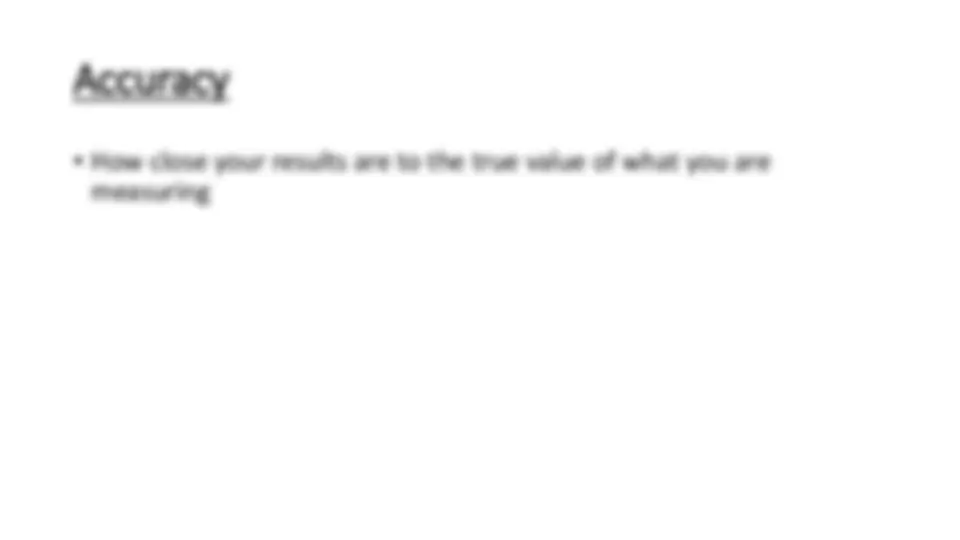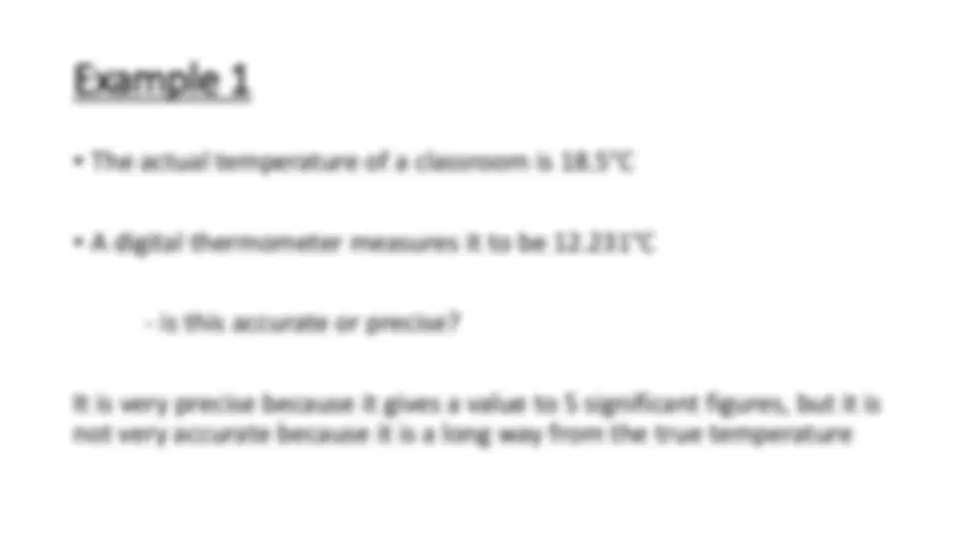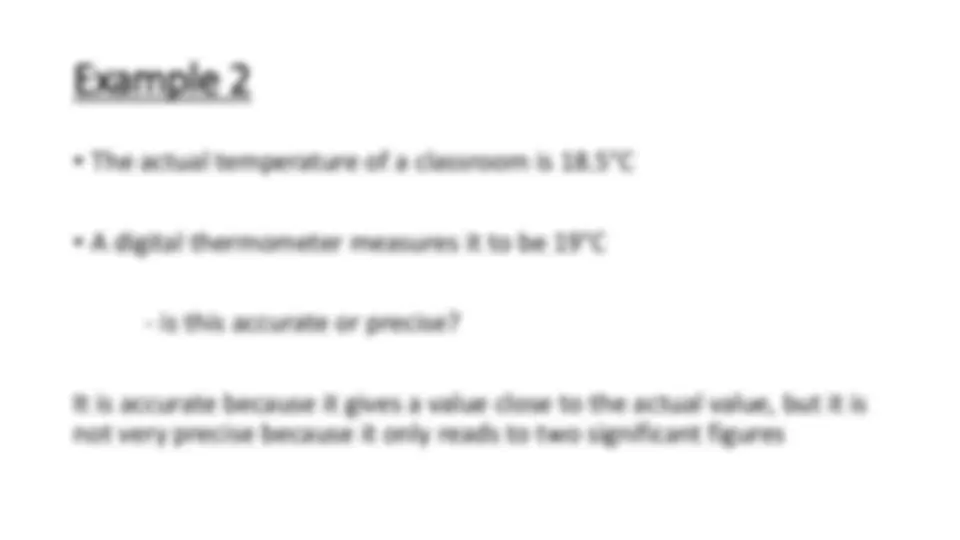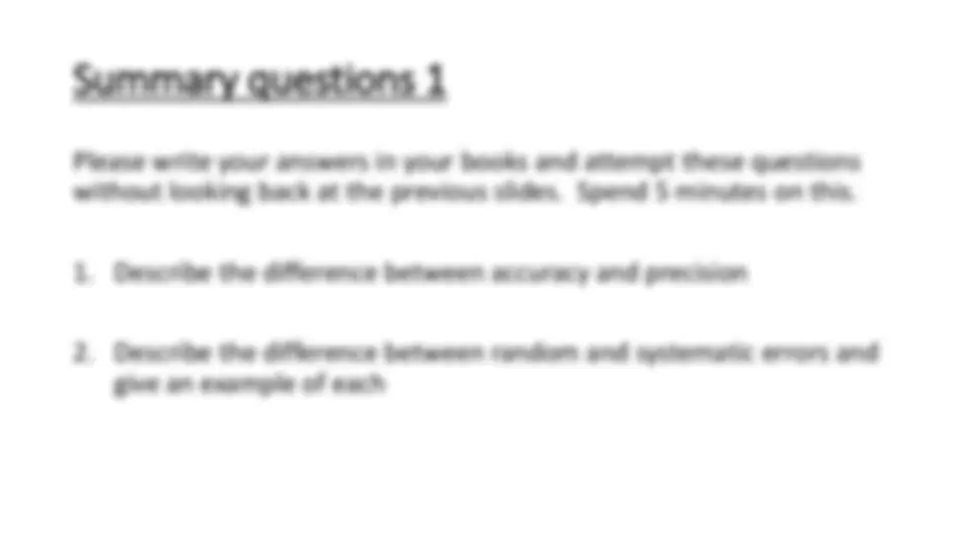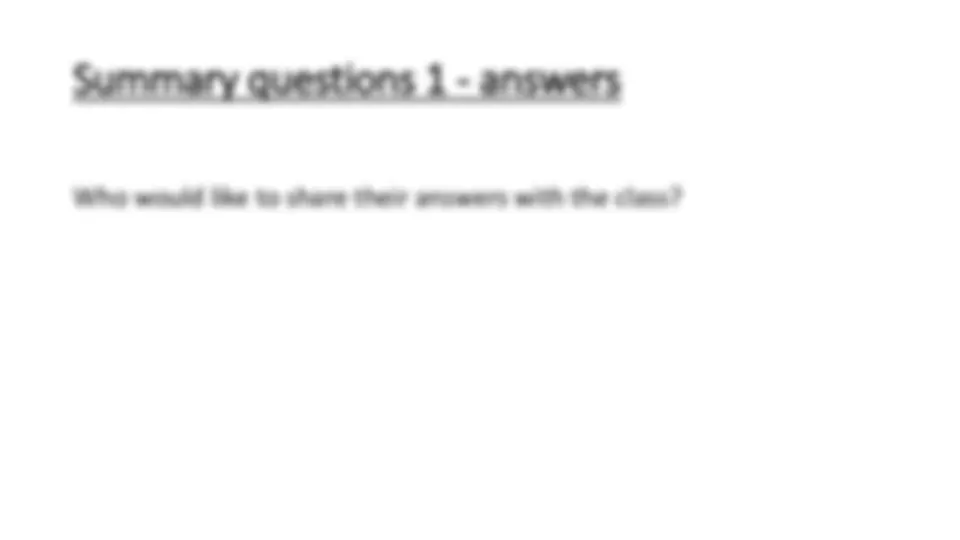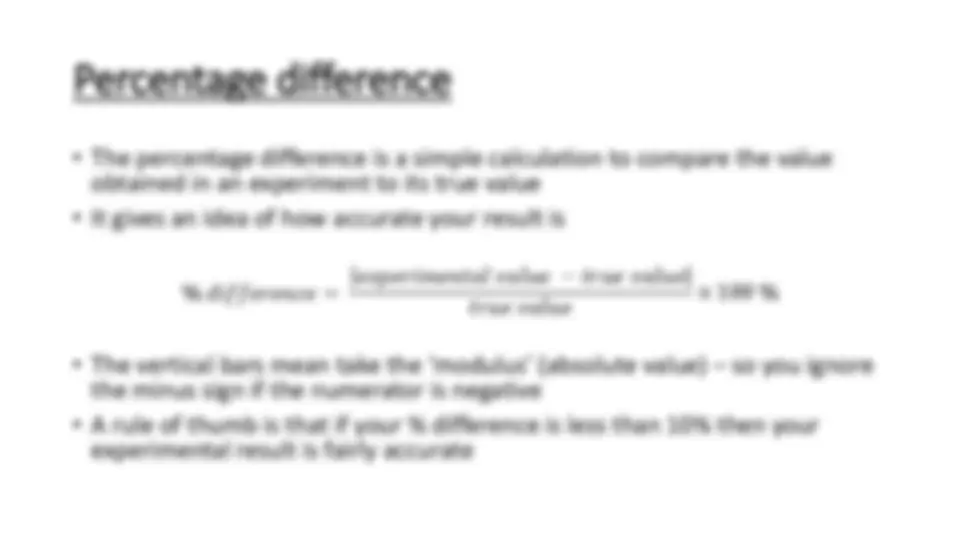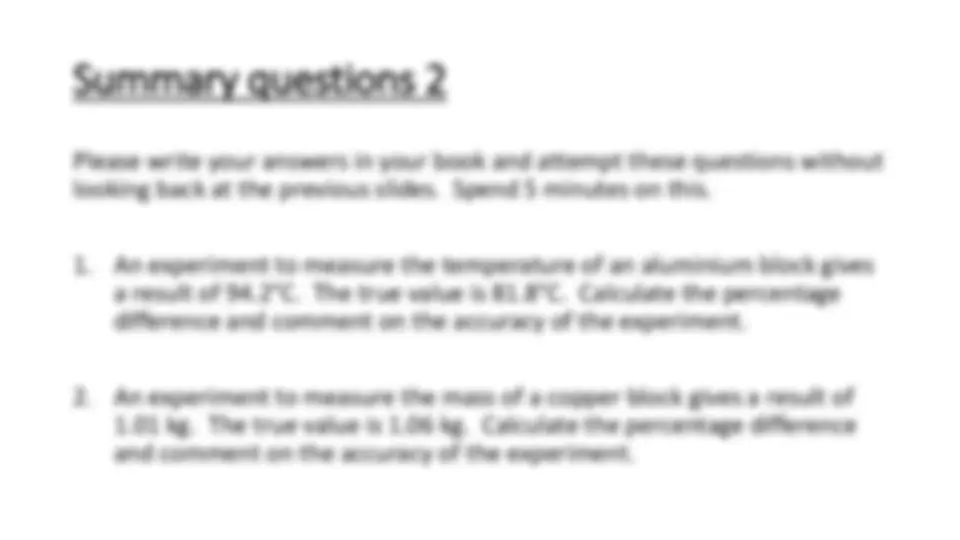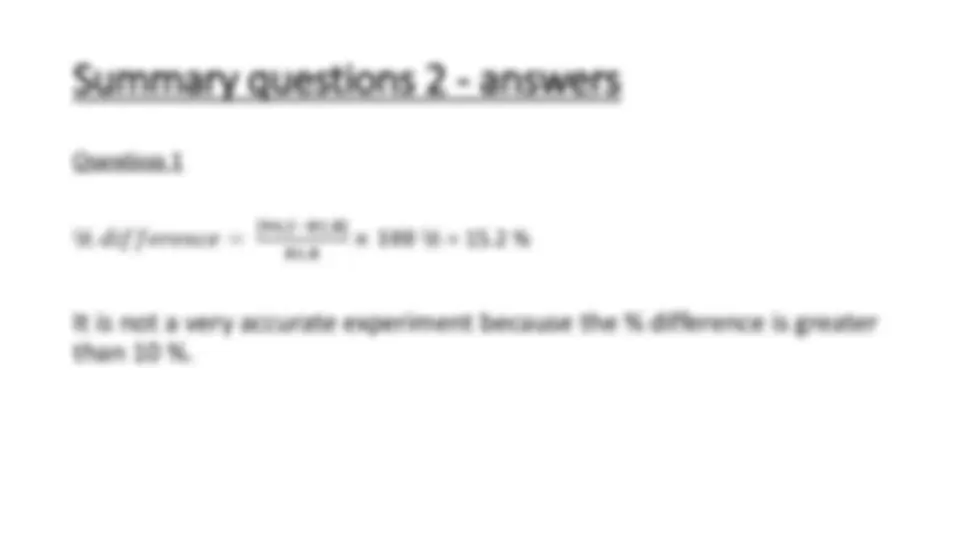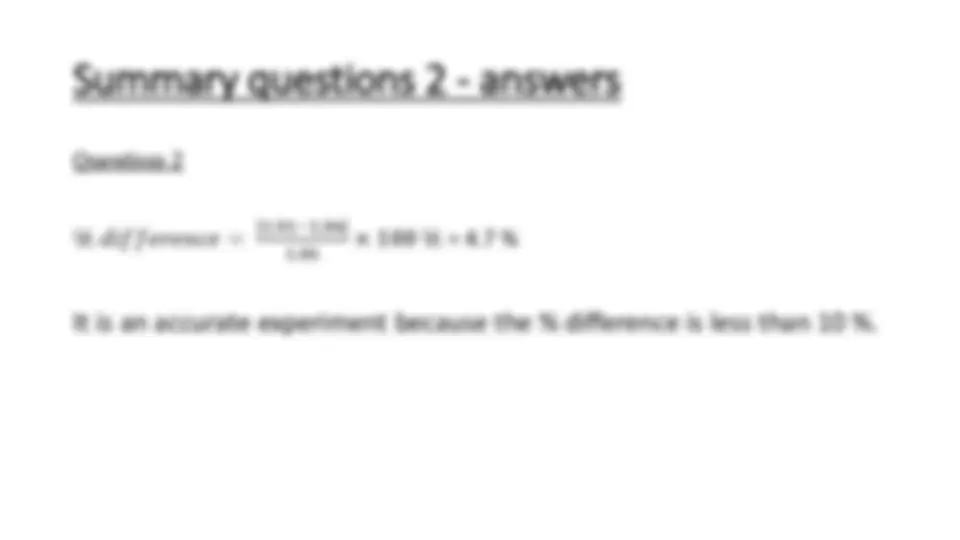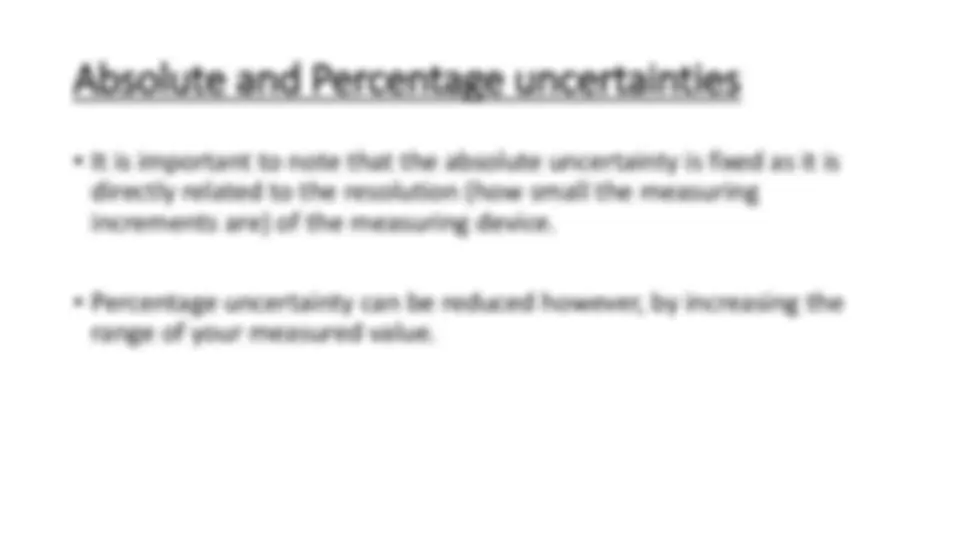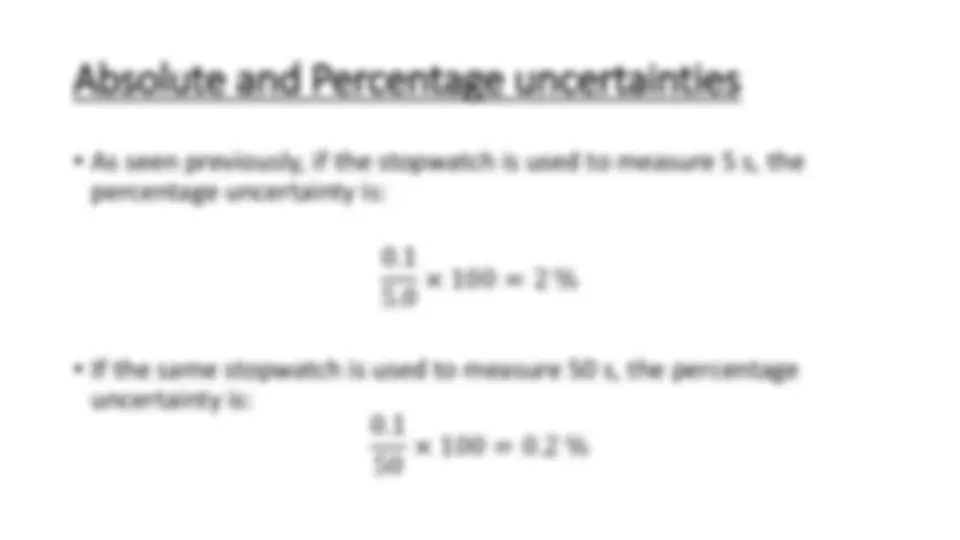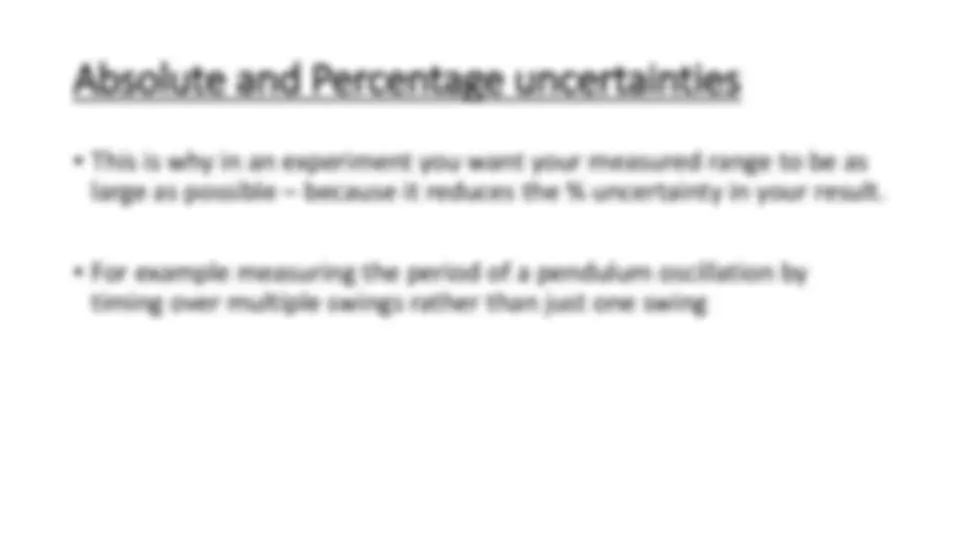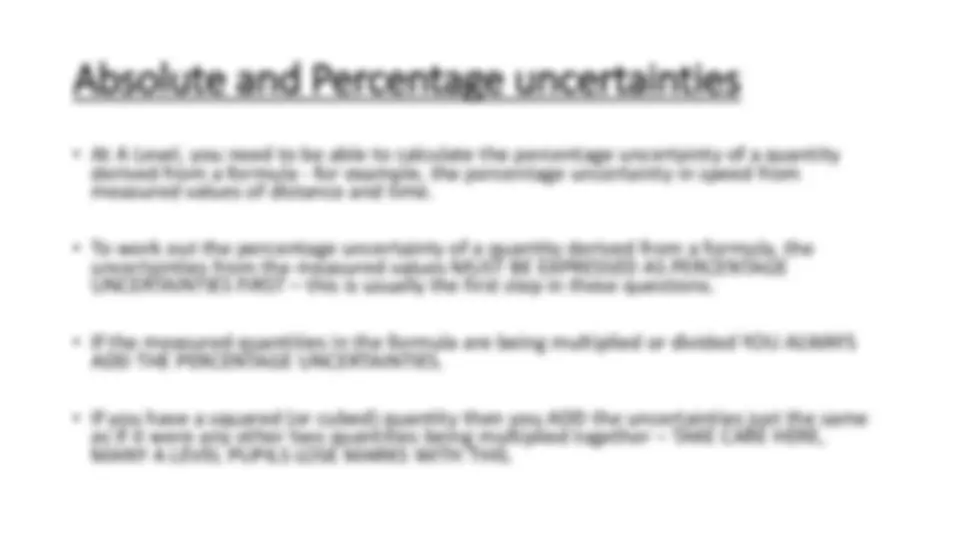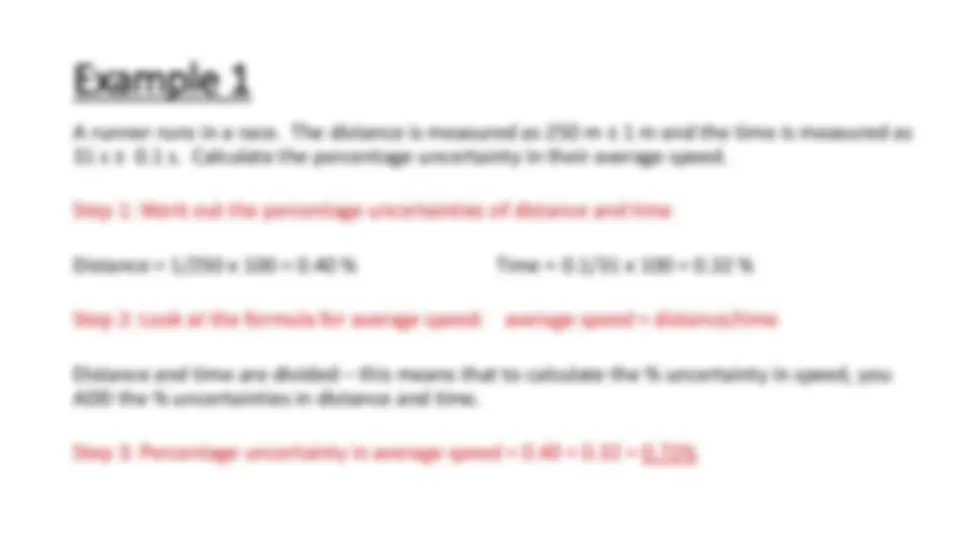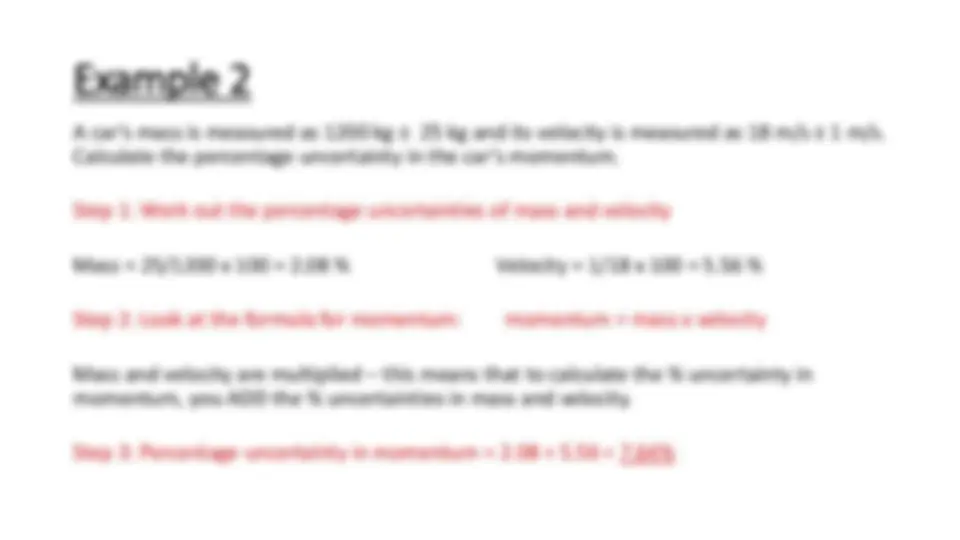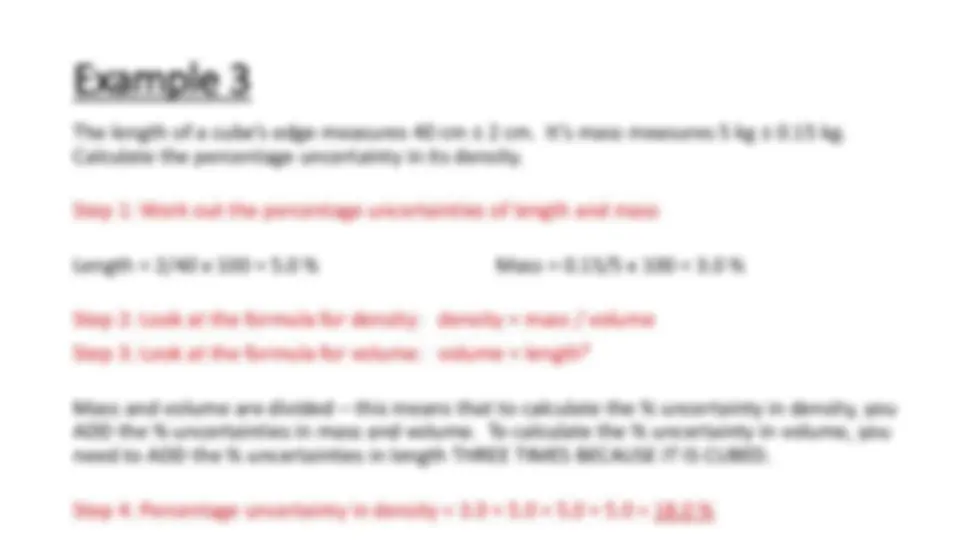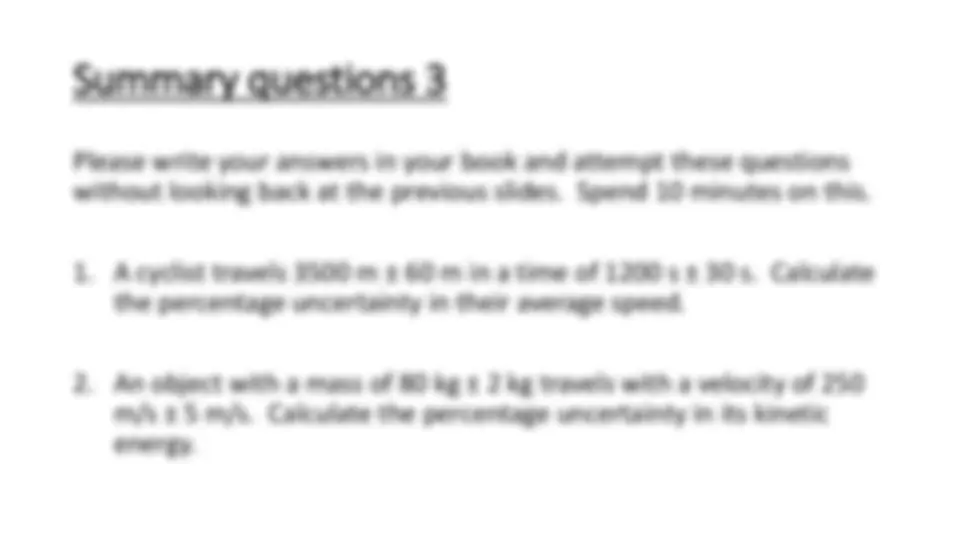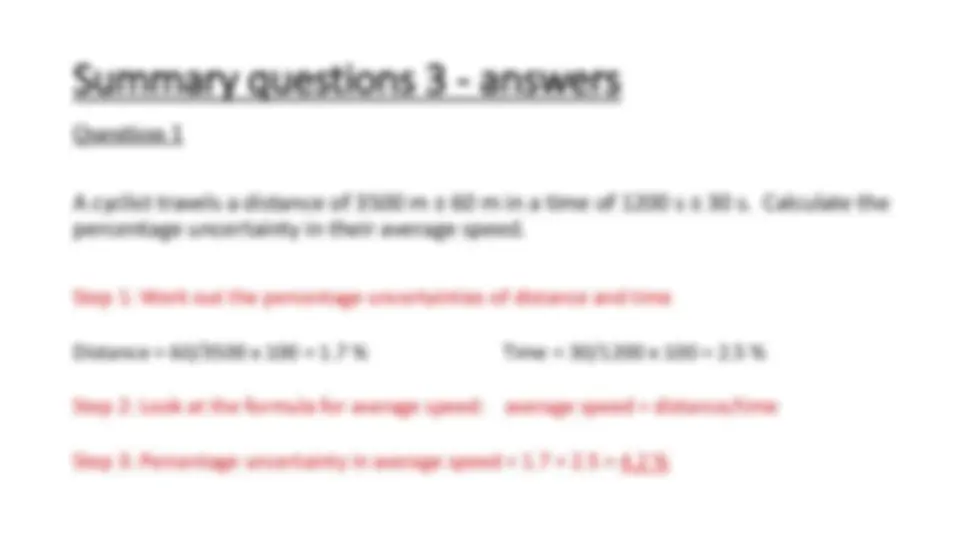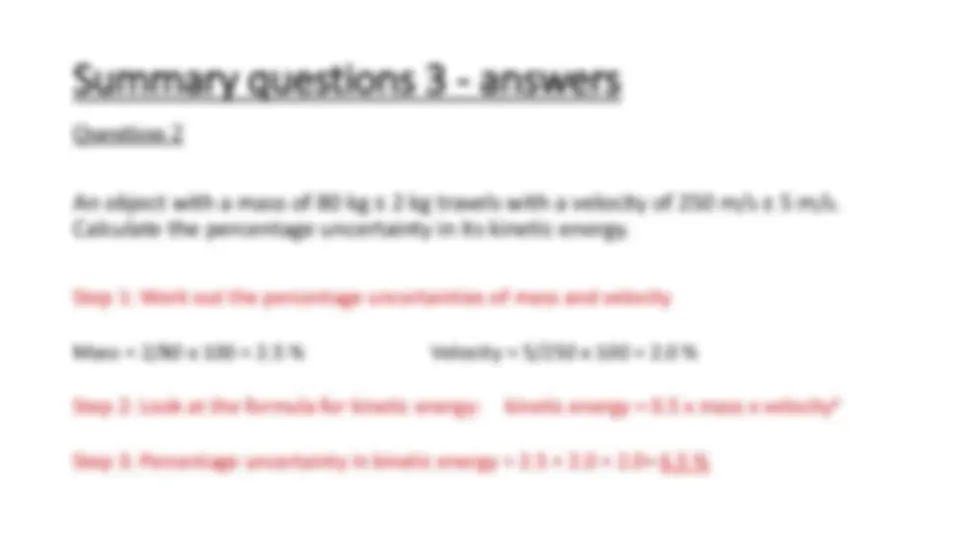Download Understanding Accuracy, Precision and Uncertainties in Measurements and more Summaries Elementary Mathematics in PDF only on Docsity!
Accuracy, Precision and
Uncertainties
Precision
- How close your results are to each other
- How repeatable they are
- The number of decimal places or significant figures that an instrument can measure
Example 1
- The actual temperature of a classroom is 18.5°C
- A digital thermometer measures it to be 12.231°C
- is this accurate or precise?
It is very precise because it gives a value to 5 significant figures, but it is not very accurate because it is a long way from the true temperature
Example 2
- The actual temperature of a classroom is 18.5°C
- A digital thermometer measures it to be 19°C
- is this accurate or precise?
It is accurate because it gives a value close to the actual value, but it is not very precise because it only reads to two significant figures
Systematic errors
- Equipment errors e.g. digital scales being incorrectly zeroed or a thermometer that consistently reads 3°C too high
- Systematic errors can be reduced by replacing equipment, calibrating equipment or using multiple sets of equipment to compare readings
- Systematic errors mainly affect accuracy
Summary questions 1
Please write your answers in your books and attempt these questions without looking back at the previous slides. Spend 5 minutes on this.
- Describe the difference between accuracy and precision
- Describe the difference between random and systematic errors and give an example of each
Percentage difference
- The percentage difference is a simple calculation to compare the value obtained in an experiment to its true value
- It gives an idea of how accurate your result is
% 𝑑𝑑𝑑𝑑𝑑𝑑𝑑𝑑𝑑𝑑𝑑𝑑𝑑𝑑𝑑𝑑𝑑𝑑𝑑𝑑 =
𝑑𝑑𝑒𝑒𝑒𝑒𝑑𝑑𝑑𝑑𝑑𝑑𝑒𝑒𝑑𝑑𝑑𝑑𝑒𝑒𝑒𝑒𝑒𝑒 𝑣𝑣𝑒𝑒𝑒𝑒𝑣𝑣𝑑𝑑 − 𝑒𝑒𝑑𝑑𝑣𝑣𝑑𝑑 𝑣𝑣𝑒𝑒𝑒𝑒𝑣𝑣𝑑𝑑 𝑒𝑒𝑑𝑑𝑣𝑣𝑑𝑑 𝑣𝑣𝑒𝑒𝑒𝑒𝑣𝑣𝑑𝑑 × 100 %
- The vertical bars mean take the ‘modulus’ (absolute value) – so you ignore the minus sign if the numerator is negative
- A rule of thumb is that if your % difference is less than 10% then your experimental result is fairly accurate
Example 1
- An experiment to measure the time taken to travel a certain distance gives a reading of 11.8 s. The true time taken is 10.3 s. Calculate the percentage difference and comment on the accuracy of the experiment.
% 𝑑𝑑𝑑𝑑𝑑𝑑𝑑𝑑𝑑𝑑𝑑𝑑𝑑𝑑𝑑𝑑𝑑𝑑𝑑𝑑 = 11 .8−10 10. 3.^3 × 100 % = 14.6 %
It is not a very accurate experiment because the % difference is greater than 10 %.
Summary questions 2
Please write your answers in your book and attempt these questions without looking back at the previous slides. Spend 5 minutes on this.
- An experiment to measure the temperature of an aluminium block gives a result of 94.2°C. The true value is 81.8°C. Calculate the percentage difference and comment on the accuracy of the experiment.
- An experiment to measure the mass of a copper block gives a result of 1.01 kg. The true value is 1.06 kg. Calculate the percentage difference and comment on the accuracy of the experiment.
Summary questions 2 - answers
Question 1
% 𝑑𝑑𝑑𝑑𝑑𝑑𝑑𝑑𝑑𝑑𝑑𝑑𝑑𝑑𝑑𝑑𝑑𝑑𝑑𝑑 = 94 .2−81 81. 8.^8 × 100 % = 15.2 %
It is not a very accurate experiment because the % difference is greater than 10 %.
Absolute uncertainties
- These are expressed as ± the smallest increment that your instrument or measuring device can measure.
- For example a stopwatch that can measure to 0.1 s has an absolute uncertainty of ± 0.1 s.
- So, if this stopwatch gives a reading of 5.0 s it should really be quoted as 5.0 s ± 0.1 s.
- This means that the range of true values is 4.9 s to 5.1 s.
Percentage uncertainties
- These are the absolute uncertainties expressed as a percentage of the measured value
- So, for the stopwatch that produces a reading of 5.0 s ± 0.1 s, the percentage uncertainty is:
× 100 = 2 %
Absolute and Percentage uncertainties
- As seen previously, if the stopwatch is used to measure 5 s, the percentage uncertainty is:
× 100 = 2 %
- If the same stopwatch is used to measure 50 s, the percentage uncertainty is: 0. 50
× 100 = 0.2 %
Absolute and Percentage uncertainties
- This is why in an experiment you want your measured range to be as large as possible – because it reduces the % uncertainty in your result.
- For example measuring the period of a pendulum oscillation by timing over multiple swings rather than just one swing

